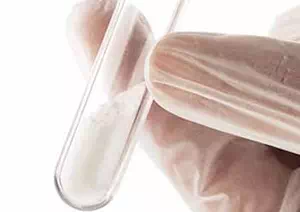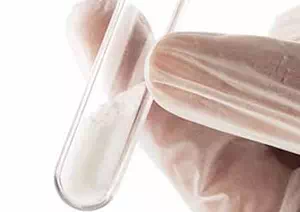All Categories


Rapamycin Powder CAS 53123-88-9, Rapamycin Powder, CAS 53123-88-9
Appearance: White to light yellow crystalline powder (may turn yellow after long-term storage or exposure to light)
CAS : 53123-88-9
Formula : C51H79NO13
Mol. wt. : 914.17
EINECS : 610-965-5
| CAS | 53123-88-9 |
| Molecular formula | C51H79NO13 |
| Molecular weight | 914.17 |
| EIENCS | 610-965-5 |
| Form | solution |
| Melting point | 183-185°C |
| boling point | 799.83°C (rough estimate) |
| Density | 1.0352 (rough estimate) |
| Solubility | ethanol: soluble2MM |
| PKA | 10.40±0.70(Predicted) |
| Color | colorless to yellow |
| Storage temp |
Chemical name: Rapamycin (Also known as Sirolimus, Rapamycin)
Molecular formula: C₅₁H₇₉NO₁₃
Molecular weight: 914.18 g/mol
CAS Number: 53123-88-9
Appearance: White to light yellow crystalline powder (may turn yellow after long-term storage or exposure to light)
Solubility: Readily soluble in ethanol, DMSO and chloroform; Insoluble in water
Stability: It has strong hygroscopicity and should be stored in a sealed container at -20℃ away from light, avoiding contact with strong oxidants
Immunosuppressive therapy (dominant use)
Anti-rejection in organ transplantation: It can replace cyclosporine, reduce nephrotoxicity, and has a better effect when used in combination with corticosteroids.
Mechanism of action: It binds to FKBP12 to inhibit the mTOR pathway and blocks the process of T/B cells from the G1 phase to the S phase.
Clinical advantages: No nephrotoxicity or side effects of gingival hyperplasia, and the rate of acute rejection decreased to 8.5% (30% in the full-dose CsA group).
Anti-tumor therapy
Targeted mTOR inhibitors: They are used for renal cell carcinoma, lymphoma, breast cancer, etc., to inhibit tumor cell proliferation and angiogenesis.
Enhanced efficacy plan: The combined use of grapefruit juice (containing furanocoumarin) can increase oral bioavailability and enhance the effect of chemotherapy.
Neurological diseases and anti-aging
Alzheimer's disease treatment: Restore the memory deficiency ability of laboratory mice and activate autophagy to clear abnormal proteins.
Research on extending lifespan: Inhibiting the mTOR pathway to regulate metabolism and delaying aging-related diseases (such as cardiovascular diseases).
Innovative application of topical preparations
Skin diseases: 0.1-0.2% gel treatment for facial angiofibromas in tuberous sclerosis complex (TSC) achieved a 12-week improvement rate of 49.87%.
Safety: Low local absorption, no systemic toxicity, and good tolerance (incidence of itching/redness <10%)
Common adverse reactions:
Headache, nausea, joint pain (dose-dependent).
Thrombocytopenia, hyperlipidemia, hyperglycemia (regular monitoring is required).
Serious risk:
Immunosuppression increases the risk of infection (especially pneumonia).
Contraindicated for pregnant women (potential fetal hazard).
Operation protection:
Wear a dust mask and chemical-resistant gloves to avoid inhaling dust (H371: may damage organs).
* Prompt reply and 24 hours online, professional team to provide best price and high quality product.
* Sample testing support.
* Every batch of products will be tested to ensureits quality.
*The packing also can be according the customers` requirment.
*Any inquiries will be replied within 24 hours.
*we provide Commerical Invoice, Packing List, Bill of loading, COA , Health certificate and Origin certificate. If your markets have any special requirements, let us know.